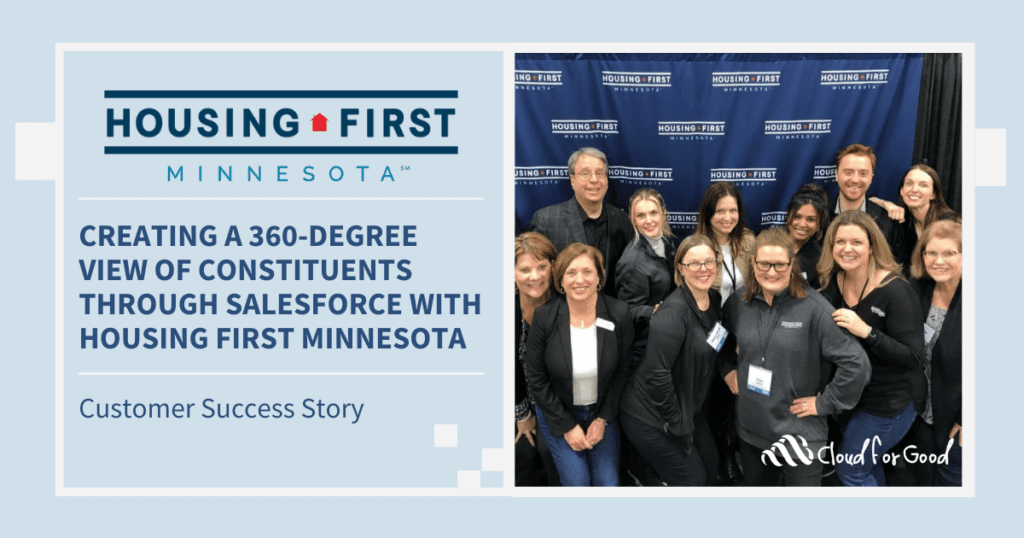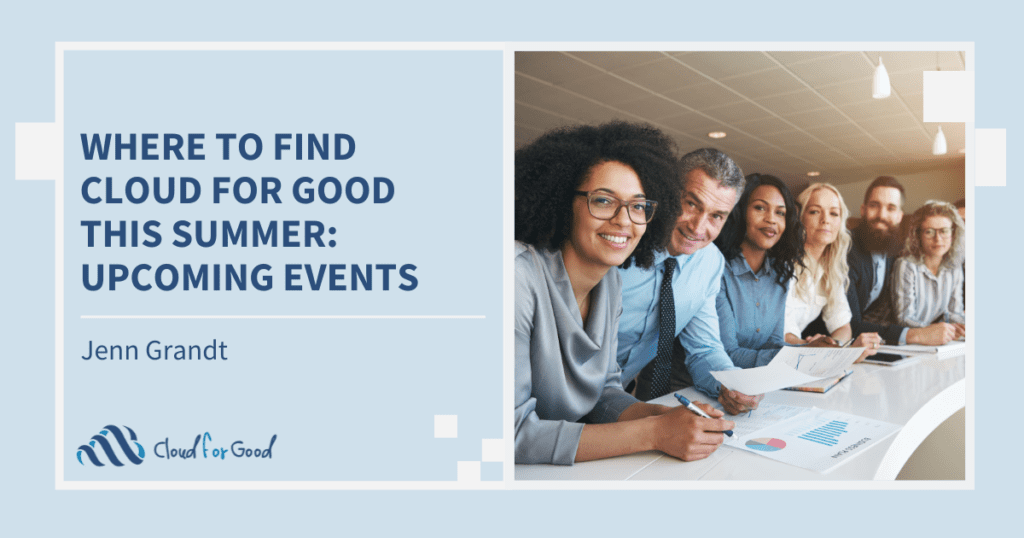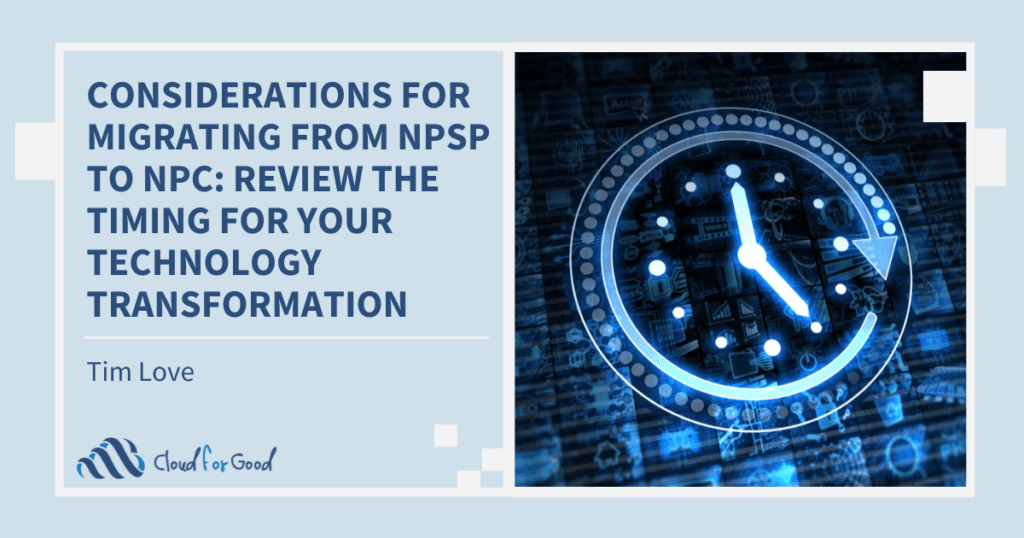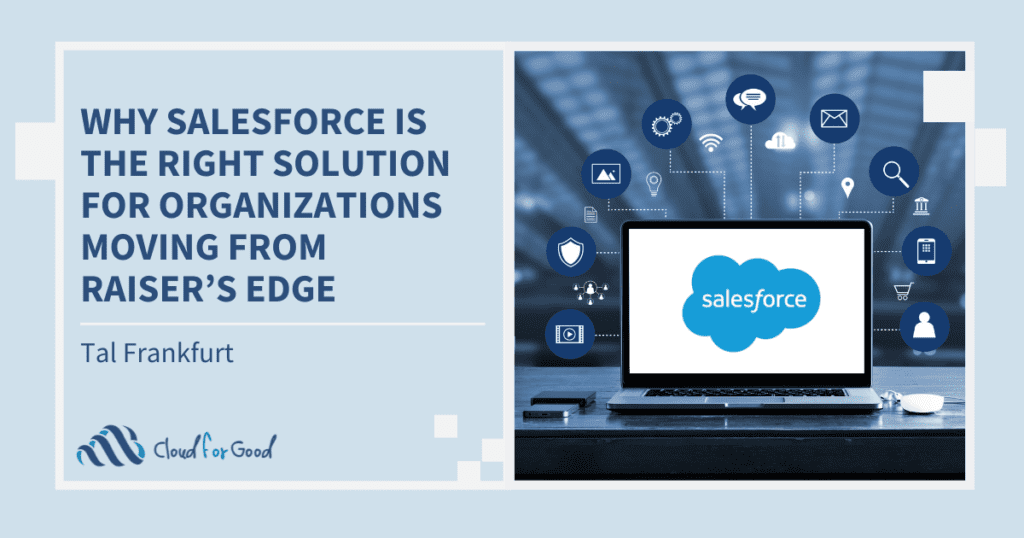We are continuing to add to and update our Nonprofits 101 manual – the Salesforce user manual for nonprofit organizations. Click here to download the manual from the AppExchange.
We recently added the below article around Account Models in the Nonprofit Starter Pack.
Account Models in the Nonprofit Starter Pack
This article will over what account models are in the Nonprofit Starter Pack, how they work, and why it’s important to pick one that works for your organization and stick with it.
An “account model” is how the people in your Salesforce system relate to and interact with organizations and the gifts and grants they make to you.
A little history will help us understand…
Salesforce– as we can deduce from the name– started life as a business-to-business app aimed at helping salesmen improve their total sales. In that world, every contact works for a company and every sale is made to that company. You shake hands with your contact, but you bill the company.
So the database was set up. Each contact had to be related directly to a company (called an Account). All the sales, “deals,” or in Salesforce terminology, Opportunities, related directly to the Accounts that bought the products and services for sale.
Here’s the graph provided at the Power of Us Hub:

Nonprofits are just different
In the nonprofit space, we don’t make sales to companies very often. We get donations from people, organizations and foundations. We offer events that people register for and pay to attend. In creating the Nonprofit Starter Pack (NPSP), the developers wrestled with the problem:
- Every contact must have an account.
- Every opportunity is directly related to an account.
BUT for us,
- Our donations come from contacts, primarily.
- Many of our donors are not related to companies at all– they’re just either individuals or families.
Two solutions…neither perfect, but they served us well for a while:
- The 1-to-1 Model
One clever idea that most nonprofits chose was to have a kind of “ghost” account created with every contact. It had the exact same name as the contact and hid out behind the contact record, essentially invisible. If you clicked on the Jane Smith Account, the system took you directly to the contact.
Opportunities SEEMED to be connected to the contacts, but in reality they were connected to the ghost account with the same name as the contact. As you can imagine, this caused confusion from time to time, especially with newbies to the NPSP.
There was a separate custom object, Household, that contacts could be attached to, so that year-end appeals could go out to the family, and not two separate letters to the same address. Total household giving could be calculated.
Who gets credit for the donation in the 1-to-1 model?
The NPSP uses Opportunity Contact Roles to assign donations to their donors, and give “soft credit” to others.
- In the graph above, John donated the money and gets a contact role designating him as the Donor. The donation summary fields on his contact will show this donation and his total donations.
- Jane, as a household member, gets credit for being a member of John’s family (and presumably some influence on this donation). This donation will show as a “soft credit” on Jane’s contact record.
- The total of all the gifts by both household members shows up in the summary fields on the Household.
- Individual or “Bucket” model
Some smaller organizations picked the Individual model. In it, ALL the contacts in the database belong to one Account, Individuals. All their donations are related directly to that account.
Donations, from individuals and families, are credited using contact roles.
Organizations with large numbers of contacts found this model unweildy, especially for running reports.
Enter the Household Account Model, NPSP 3.0
With the thoroughgoing revision of the NPSP, the Salesforce foundation announced a new account model, the Household Account model. Household became a non-overlapping category, or Record Type, of the Account object.
Even the graph looks simpler!
- Individuals in the same family or household are directly related to an account named [Last Name] Household.
- Instead of having a separate Household object, the Account is now the household and all the household members are directly related to it.
- Opportunities are still directly related to the account…but now the account is the household, so the attribution is more direct. Reporting is easier.
Who gets credit for the donations in the Household Account Model?
- If the donation comes from the FAMILY, the donation is credited directly to the Household Account.
- If the donation comes from one of the individuals in the family, the contact role will show the contact as Donor and other family members as Household Members– basically the same as in the 1-to-1 model.
What happens to the companies my contacts work for?

The company is listed as the Primary Affiliation and the Organization (Account) Name is the Household.

The Affiliation connects Contacts and Organizations
Here, Jane is the person we call at the Nonprofit Funding Institute, so she’s marked as Primary.

What if my contact works at a company, doesn’t donate, and I don’t know a thing about his family?
You have a choice on this one.
- The Household Account model assigns EVERY contact to a household by default. You can simply go with the default, which is the strong recommendation of the Salesforce Foundation’s developers, and create an Affiliation between your contact and her company, listing her role in the company.
You will do that with your donors as well– accept the Household as their Account, and then connect them to their workplaces with Affiliations.
- OR– you can, when you create the contact, put their workplace into the Account field. If they surprise you and become a donor, just delete the account name from the Contact record and a household will magically appear there.
The Affiliation will not be erased, though, but will be marked as Former. If your contact is still working at the company, you’ll want to change the Affiliation record back to Current.
You may also be interested in the following:





